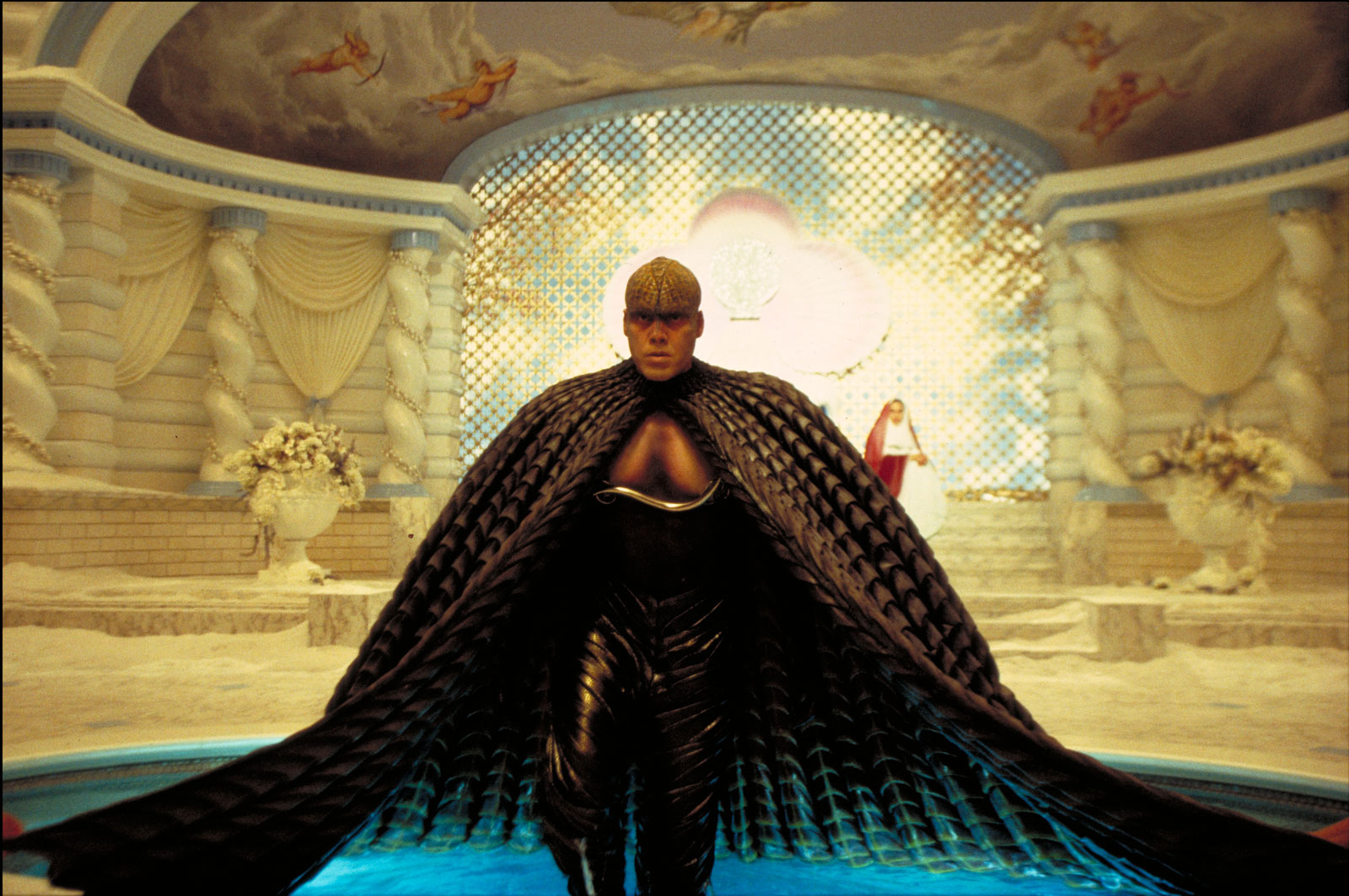
 It’s like Pink Floyd’s The Wall, with more gore, less dialogue and no music.
It’s like Pink Floyd’s The Wall, with more gore, less dialogue and no music.
The Good: The film is stunning visually. It’s also presented in a very atypical manner, at least among the ranks of music video directors who’ve turned their hand to features. Tarsem’s style has more in common with that of someone like Akira Kurosawa than it does with other folks who’ve graduated from the Mtv school (not that I’m really comparing this guy to Kurosawa.) Missing are the millisecond takes, rapid fire editing and shaky-cam fueled “excitement” of folks like Michael Bay (The Rock.) Instead, Tarsem, cinematographer Paul Laufer and the editing team of Paul Rubell (Blade) and Robert Duffy present a series of beautifully framed, colorful, luxurious takes. The eye is allowed to linger on the brilliant, hallucinatory imagery and that is, for the most part, a wonderful treat.
The Bad: Everything else. Wooden performances, 7even style sadism by the truckload (minus that film’s saving intelligence,) a thin plot, and remedial dialogue combine to drag down any enjoyment I might have gleaned from the above visual magnificence. Vince Vaughn looks distracted throughout, Jennifer Lopez lacks her normal vitality and the stellar chameleon that is Vincent D’Onofrio (match one face from Full Metal Jacket, The Player and Men In Black– he’s a pivotal character in all three) is unimpressive in what, on paper, looks to be the kind of role in which he would shine.
The Wrapup: Without the nasty, nasty torture scenes I’d recommend this film to any fan of the fantastic, all it’s other faults be damned. With it, I can’t even go that far as, let’s be honest here, seeing some of this stuff would be a real buzz-kill. I wouldn’t like to think about what would happen if one were on a powerful hallucinogen.
This review was originally published in Boston's Weekly Dig (now digBoston) in August 2000.